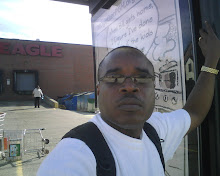I return to an observation I made in an earlier blog on the Christmas day bomber in which I indicated that outsiders may be finding it increasing difficult to launch terrorist attacks on us from the outside. The Times Square bomber further confirms this. He has been in the US long enough to obtain citizenship and at thirty had to have been here since he was probably 24 years old or younger. Which means he would have been in Pakistan during the 9/11, the start of Afghan and Iraqi wars and all things in between. It would be instructive to get into his mind to understand how notions of terrorism are established and find expression, and whether he became corrupted here,in the US or in Pakistan and what were the triggers or events.
The fact that he was caught speaks to the increased ability to track terrorist and create a sense of confidence in law enforcement, and apprehension in other would-be terrorist who by their actions demonstrate they would rather not be caught.
There is something more important in what happened that is treated as luck and it appears that many of the major media houses also frame it as such and that is, the skill and attitude of this veteran to notice the vehicle and the smoke, and to set off the alarm. What this suggests is the first indication of a shift in behavior and response in the face chronic threat. Anderson (1967) argues that the more chronic a threat, the greater will be its integration into the local culture. We are being to see an inculcation of response to terrorism into the New York culture as a result of the persistent threat of terrorism
September 9/11 was a sudden event but since then subsequent events are transforming terrorism into a chronic threat in which a culture of mitigation is beginning to emerge. In such a culture ordinary people are beginning to work to reduce or respond to that threat. It was ordinary people who responded to that threat on Christmas day. That kind of respond corresponds to what Carr (1932) and Dombrowsky (1980) referred to as social and cultural protections. They argue that it is a collapse of these protections that results in disasters. Such an approach is instructive for other disasters, if one argues that disasters are often associated with faulty decision-making based on inadequate,untimely or faulty information.
Terrorism requires protections different from other threats since it is human-induced and fabricated in the mind and philosophy of men. A counter-mindset is required to diffuse it. As one expert noted "we may not be able to prevent the events" but we can sure use our observation skills, presence of mind to set off alarms and the courage to take responsibility for the safety of our communities and fellow human beings. It took some spatial awareness and local knowledge of New York to achieve that in this case.
Additionally, two years ago I wrote about the cameras being placed in public places and argued that in an increasingly dangerous world they would serve as a deterrent and media for evidence collection. While I believe in fundamental human freedoms, those freedoms have to be secured and maintained at a price.Part of that price is intrusion on our public space. Law abiding citizens have nothing to fear. If anything those Time Square cameras saved another day. Moreover, as threats persistent, more human surveillance will emerge, in which case big brother will be watching both in the air and on the ground. Imagine what that would be like if we would be vigilant to every threat, even when it is a false alarm. False alarms are trial runs.
Tuesday, May 4, 2010
Subscribe to:
Post Comments (Atom)

No comments:
Post a Comment